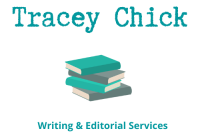Do you want to write your memoir, but have no idea where to start? Follow my seven tips to help you hone your memoir writing craft and create a work you can be proud of.
Share this post in your favourite places!

Tip 1. Remember. Memoir is NOT autobiography.
Before you set out to write your memoir, it is important to understand the difference. Autobiography is the story of someone’s life as told by that person. It is presented as a ‘who, what when why’ of the author’s life and usually covers the whole course of that life up until the point of writing. Of course, memoir is also about a person’s life, but it differs in that it shines a light on a particular time or aspect of that life and is more intimate in its tone. Often a memoir will reflect on universal truths, for example on death, childhood or love.
As with any writing, it’s important to read and my advice would be to read as many memoirs as you can to get a feel for the genre.
If you would like recommendations, some of my favourites are The Cure for Sleep by Tanya Shadrick, Helen Macdonald’s H is for Hawk, and Amy Liptrot’s The Outrun. I’ve also added a couple of links to lists of memoirs for you to peruse in more resources at the bottom of the page.
Tip 2. Consider who you are writing for
This might sound like a strange tip but it is important to consider what your intention is for your memoir. If you are writing it for therapy, or to make sense of something that has happened to you, then of course there will be no need to consider who you are writing for. But if you want to share your story with the wider world, you need to think about your reader and their expectations. You need to bring them along on your journey by writing a story that is engaging, that compels the reader to turn the page. And this leads nicely onto my next tip:
Tip 3. Craft it like fiction
Employ fiction writing techniques such as ‘show don’t tell’, write scenes with dialogue to add drama and life to the narrative. Bring to life the characters in your story much as you would when writing a novel. Describe their physical or behavioural traits, their clothing and personalities. In theory, this should be easier to do because the people who you are writing about are real so you don’t have to imagine the details.
In The Cure for Sleep Tanya Shadrick writes a wonderfully evocative description of her husband, Nye:
‘Him to me: so quietly at home in his bones, his clothes – a single pair of brown corduroy trousers, faded denim shirts. Listening more than he spoke always, head to one side and smiling’.
Wow! Simple words, but so effective.
Tip 4. Fill it with emotion
Think about the kind of emotions you want to evoke in your reader. You are at the centre of the story, and you want to give them a reason to keep on turning those pages long after they should have turned off the light and gone to sleep. Perhaps you want to make them laugh out loud at something ridiculous you did as a child, or cry over the heartbreak you suffered when you broke up with your first love.
The best way to do this is to write from your heart. Reveal the pain you felt, the joy, the despair. Share your reflections on what happened, what you learned as Amy Liptrot does in this extract from The Outrun:
‘At night I pushed my feet against the wall and felt as if my body was falling. There were flashes of happiness, a wild, open joy of life in little things that pleased and enfolded me. I felt lucky but could never hold onto it.’

Tip 5. Show how you’ve grown
Much like the character arc in a novel, the reader will want to see that you, the protagonist, has changed as a result of your experiences. If your memoir doesn’t do this, the reader is likely to lose interest. This should be easy right? After all, you have lived those experiences. However, many people find it difficult to express just exactly how they’ve been changed. They shy away from looking deeper into themselves because they find it an uncomfortable experience. But for a memoir to be truly successful, there has to be a letting go, a trusting in the process. Doing so means the reader will have a satisfactory reading experience and will be able to relate to your journey and gain some perspective on their own situation.
Tip 6. Build trust with your reader
Probably the most important thing about writing in the narrative nonfiction genre is building trust with your reader. The events you write about must have happened. However, the caveat to this is that the truth you are writing is the truth as seen from your perspective. In my post ‘What is Creative Nonfiction?’ I mentioned Lee Gutkind’s book You Can’t Make This Stuff Up. In it he writes:
Truth is personal – it is what we see, assume, and believe, filtered through our own lens and orientation. Although it may revolve around the same subject or issue, the truth as one person perceives it may not be the same truth another person sees.’
He also tells the cautionary tales of several authors who wrote books they tried to pass off as nonfiction and who all ended up being discredited and suffering in their later careers.
Gutkind’s book is a great reference for those writing in the narrative nonfiction genre and I highly recommend having a copy on your shelf.
Tip 7. Consider your structure
There are several ways you can structure your memoir, and whatever you choose will depend on your vision of the finished product. It’s a good idea to have some idea which structure you are going to use before you begin. This will save much time and reduce frustration!
The most straightforward way of a structuring a memoir is to do it in chronological order. Writing in this linear way means its easier to keep track of where your narrative is going, but the down side of this approach is that it can come across as ‘ x happened, then y happened then z’ which could prove boring for the reader.
Structuring your memoir around a theme is a good way of organising your work. The theme could be loss, or grief or abuse, amongst others, but whatever it is, the underlying message to the reader is that it is possible to overcome such difficulties.
Using flashbacks and flashforwards can help you to introduce an important idea or anecdote at a particular point that you will revisit later on in the text. It is also a good way of creating impact in the memoir by beginning with a dramatic moment eg a death, which will be picked up again later on. This method needs careful planning to ensure the reader can follow what is happening, but it is worth the effort.
So there you have it. My top seven tips for writing your memoir. Let me know your thoughts in the comments below.
More resources
50 Best Memoirs of the Past 50 Years
30 Best Memoirs to Read in Your Lifetime

Tracey Chick is a line and copyeditor specialising in historical fiction and narrative nonfiction.
She is a member of the Chartered Institute of Editing and Proofreading.
Visit her business website at Tracey Chick , connect on Twitter at @WriterTjc, LinkedIn and Facebook
Share this post in your favourite places!

Pingback: How to Write for Your Audience - Tracey Chick - Freelance Fiction Editor